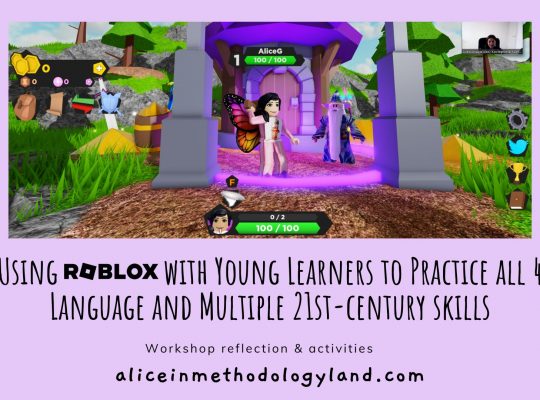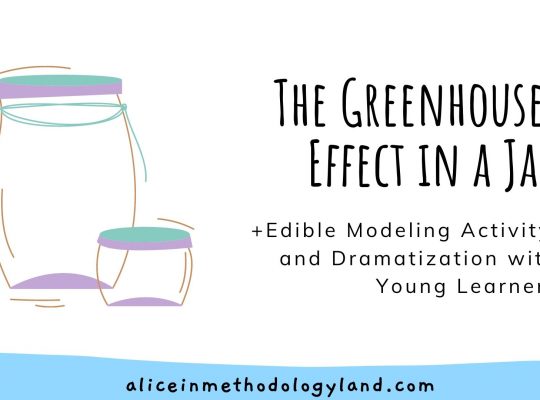How can you develop reading and writing skills in your learners as a TEYL teacher? Read this academic essay to discover new, efficient methods for TEYL, or specifically, teaching reading and writing to young learners.
It is often considered that the reading and writing activities are very passive and even redundant for language learning. Many kinds of research proved this point of view outdated, and the results were the opposite. Reading and writing are complementary language skills that are equally important as speaking and listening skills. All four language skills should be included and practiced in the classroom, regardless of the unit theme or the age of the learners. Developing literacy skills in foreign language instruction is another step to achieving native-like fluency, and it should start at the same time as the first language instruction.
Components of learning literacy at a young age
According to the International Reading Association & the National Association for the Education of Young Children (1998), there are several components of learning literacy at a young age:
- Awareness and exploration;
- Experimenting with reading and writing;
- Early reading and writing;
- Transitional reading and writing;
- Conventional reading and writing.
Top-down and bottom-up language processing
When it comes to teaching reading, the teachers should develop two main reading skills, which rely on top-down and bottom-up language processing. The top-down reading skills focus on the meaning and context, and the bottom-up reading skills focus on decoding letters and words. Both approaches are necessary, and they must be present in literacy instruction.
The three main approaches to teaching reading are the phonics approach, the whole language approach, and the language experience approach. The phonics approach focuses on using bottom-up language processing, while the whole language approach and the language experience approach rely on top-down processing.
The reading skills develop through levels, and they are the lowest at the letter and phoneme levels, where the learners only recognize the pronunciation of certain letters. After the letter and phoneme level, the learners progress to the syllable and morpheme level, where they can distinguish the position of certain sounds in each word and pair those sounds. Next, reading skills develop to the word level, which is important because, at this reading level, the learners can read, recognize and use the most common sight words. The final goal of literacy instruction is to develop the ability to read sentences independently and in a bigger context. At this level, the learners should be able to comprehend and connect the words in a meaningful sentence, connecting to a larger text.
Acquiring writing skills
Another part of literacy instruction involves acquiring writing skills, which develop simultaneously as reading skills. When it comes to teaching writing, there are three main approaches, as written by Shin and Crandall (2014):
- A product-based approach – one that focuses on the final product;
- A process-based approach – one that focuses on the process of writing;
- And the last approach is TO/WITH/BY approach, which focuses on teaching reading and writing simultaneously, though carefully scaffolded activities.
The TO/WITH/BY approach
According to Shin (2017), effective scaffolding or the TO/WITH/BY approach is the best way to teach literacy in the classroom.
- Start with reading and writing TO students consists of read-alouds and writing think-alouds.
- Continue with reading and writing WITH students consists of big book shared reading, the language experience approach, choral reading and reading theater, interactive reading, guided reading and class book reading.
- Finish with reading and writing BY students consists of independent reading and writing with activities such as literacy centers, literature circles and research projects.
EFL teachers should use a balanced approach when it comes to developing literacy skills in their classrooms. For example, reading and writing are complementary skills, and they need to be developed simultaneously. In addition, even though the literacy skills from the native language can often be transferred to the foreign language, the development of these skills needs to be supported by a teacher, in a language-rich environment, with many meaningful and engaging activities.
Explore this article below about teaching speaking and listening to young learners.
What do you think about these TEYL methods, and how do you approach teaching reading and writing to young learners in your classroom? Write in the comments or via the contact page!
References
- Savic, V. (2018). Teaching Reading and Writing, PPT
- Shin, J. K. (2017). Literacy Instruction for Young EFL Learners: A Balanced Approach. National Geographic Learning. https://ngl.cengage.com/ourworldtours/OurWorld/media/Downloads/Literacy-Instruction-for-Young-EFL-Learners_White-Paper_2017.pdf
- Shin, J. K. & Crandall, J. (2014). Teaching Young Learners English: From Theory to Practice. Boston: Heinle ELT, Cengage Learning.
- Rasinski, T. (2004). Creating fluent readers. Educational Leadership, 61(6), 46-51.
Shared Writing: http://www.youtube.com/watch?v=j-Em34VP3cQ - Interactive Writing: http://www.youtube.com/watch?v=09BA8bwOArA&feature=related
- Guided Writing (Writing Workshop): http://www.youtube.com/watch?v=8qt-njsn5fQ
- Independent Writing: http://www.youtube.com/watch?v=zxoywUhllwc

Click here to explore my store where 99% of materials are forever free!
All the materials except lesson plans and 30+ page interactive activity books will be free FOREVER! Why? Because sharing is caring, and 2020 hasn’t been kind to all of us. Please consider donating so I can keep making FREE materials for everyone and keep my website open for all of you.
Don’t forget to leave a review when you download materials! It’s just a minute of your time, and it means a lot to me.
P.S. The store and the freebie library are not the same thing – the freebie library has some extra materials like conference presentations and webinar recordings which are not available in the store ✨
The subscription link for the store is below my bio in every post. ?








[…] TEYL – Teaching Reading and Writing to Young Learners […]
[…] TEYL – Teaching Reading and Writing to Young Learners […]